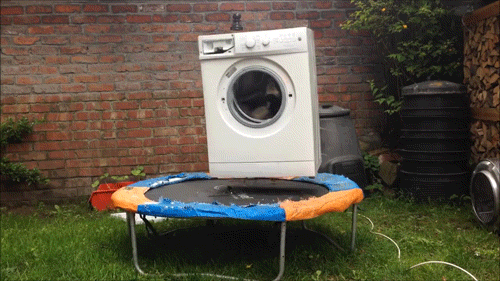5 Tips to Blog Smarter, not Harder

I started blogging seriously back in 2007. My first successful blog was a motorcycle blog that I intended to write primarily about my motorcycle rides and projects. The blog 2WheelTuesday which was recently deleted morphed into something much greater. It actually morphed into a small business.
I learned a lot along the way. I managed writers, worked with advertisers, social media, and most importantly wrote almost daily. I celebrated some really big wins and attracted a large following. The amount of content created and being the "first to publish" became more critical than the content itself. That is when I decided to pivot away from motorcycle news and back to one of my passions.
By nature, I am far from a gifted writer. But, after writing consistently for the last 10 years I found a few tricks along the way.
1. Use Ghost

One of the most important decisions I made was moving away from WordPress. WordPress is a great platform but has become unfriendly to people wishing to just write. This is why I switched to Ghost.
Ghost is an amazing platform for writing. It has an excellent split-screen editor which helps with formatting in real-time. It is not a beast with unnecessary plugins for every little task. It is light, easy and is able to handle lots of concurrent visitors with ease. If you want a hassle-free blogging platform then look no further.
Ghost's project founder John O'Nolan actually was the lead designer for WordPress. John became frustrated with the complexity of WordPress and its turn from Blog to Content Management System. He created a Kickstarter campaign in 2012 for Ghost and a beautiful platform dedicated to writers was born.
2. Create Blog Titles
Often we find it hard to stare at a white screen expecting to find inspiration. We sometimes hope inspiration jumps off the screen and grabs a hold of us. Instead, we need to simplify the process of inspiration. The best way to get started is to break down the white screen into smaller tasks. Create 4 Blog titles about different topics and save these blog titles as articles.
Once a title is onscreen it becomes easier to build a supporting thought process. Take this opportunity to research and build a thought process for each blog title for at least a day. Set a reminder for 24 hours after you created the titles. This gives you time to research the different titles and form a thought process for each title.
Finally, decide which articles resonate with you the most. Narrow down the articles to 1 or 2 finalists. Focus on these last titles and choose which title you can write the best content for.
3 tools to help you create Blog Titles
- Title Maker / Idea Generator - This is an interesting tool that gives some context of why to choose each title.
- Blog Title Generator - Also provides some inspiration for titles as well as the possibility to save your creations.
- Title Generator - This tool gives by far the most results but doesn't contain much randomness
3. Time to Write
It is now time to put your creativity to work. Again we break the writing process down into smaller more manageable tasks. Build the framework of the article by creating several topic headings. The headings help psychologically with reading and writing and with Search Engine Optimization (SEO).
Next, focus on creating content and don't stop. Get your thoughts typed out. Aim for at least 2 paragraphs per heading. Don't worry about grammar or spelling as we will handle that later on.
4. Use Images

A large percentage of your website visitors will bounce in less than 15 seconds after they arrive. That is not a lot of time to keep the attention of your visitor. It is important to not only have engaging written content but supporting images as well.
Use images that support the surrounding content. It is important to ensure that the images don't interfere with reading the article. For example, squeezing text and bad image positioning can produce difficult to read text.
3 Image Tips
- Give the images meaningful names
- Create unique images with Pablo
- Use free High-Resolution pictures from Unsplash
Try to limit the number of pictures to no more than 3 images per blog post. The reason being too many images will slow down the website load time. Page load time can also influence how Google ranks articles in search results. GIF's are also great additions to articles but be sure to test them as load times can sometimes be slow.
5. Editing

Once you have finished your masterpiece it is time to edit. Postpone editing until you are really finished writing. I rely heavily on two tools to help with making my articles more grammar friendly and readable.
2 Must have Editing Tools
- Grammarly - This is an amazing free Google Chrome plugin. It checks your grammar, spelling, and general rules as you go
- Hemingway App - This app helps make your writing more readable.
Run through all the editing once with Grammarly. Once you are satisfied with the results copy the content to the Hemingway App and make final adjustments. After completing both Grammarly and Hemingway re-read to ensure everything still flows correctly.
Wrap Up
To properly execute these tips every week setup reoccurring tasks. I use ToDoist but use what you are comfortable with. Setup the following tasks:
Tasks
- Monday - Create Blog Topics
- Tuesday - Research & article ideas
- Wednesday - Publish 1 to 2 articles
This is my writing process and it works exceptionally well for me. There is no single solution that works for everyone but adapting some of these tips to your routine can definitely help.
No substitute for actually writing so start writing and don't forget to enjoy.
Follow me
If you liked this article be sure to Follow Me on Twitter to stay updated!
